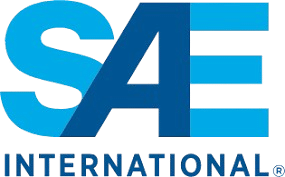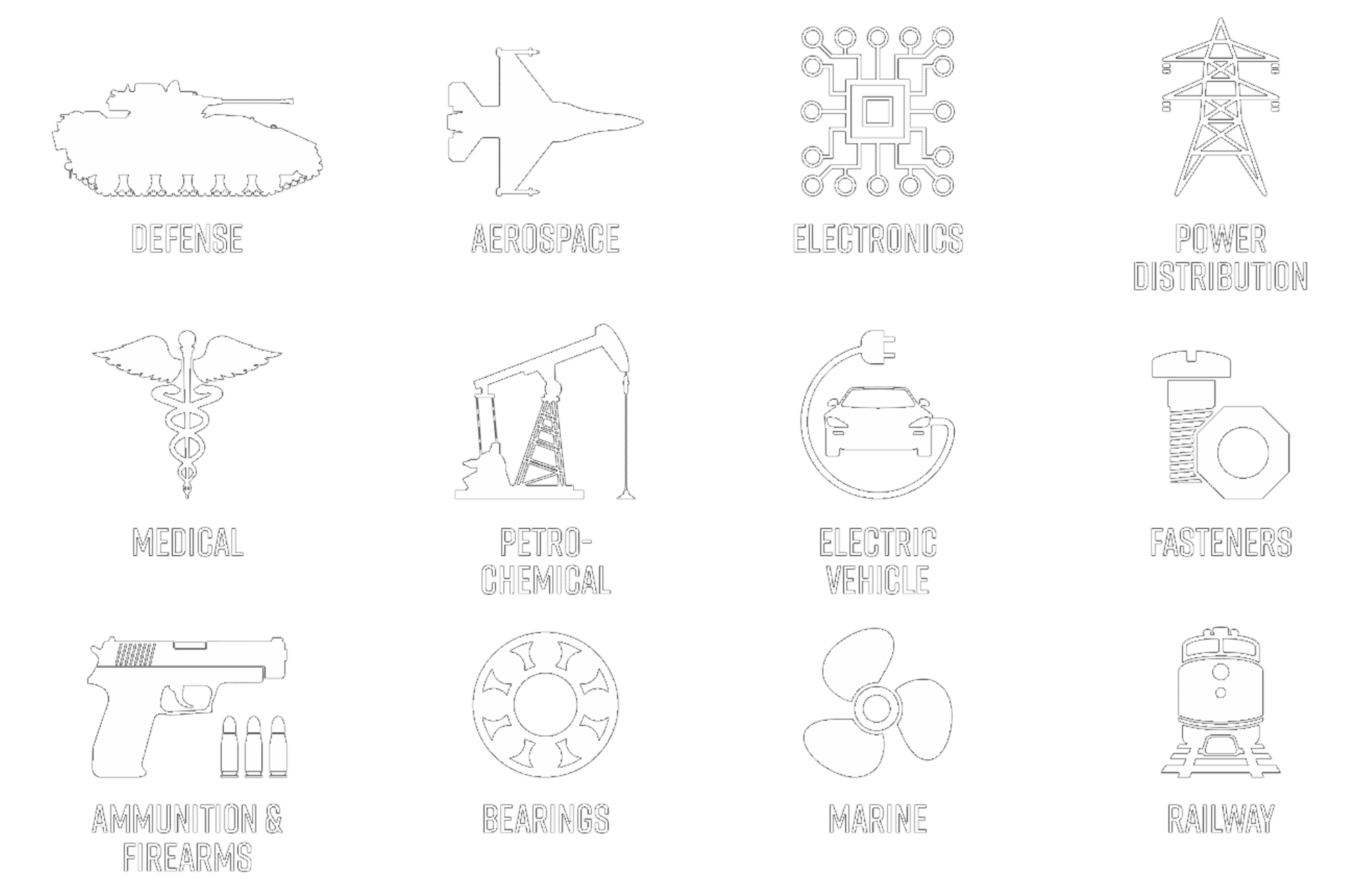
LEAD PLATING SERVICES (COMPANY) PER MIL-L-13808 & AMS 2414
Advanced Plating Technologies, a Milwaukee, Wisconsin company, provides industry-leading precision lead plating services to MIL-L-13808 & AMS 2414. Our expertise in providing technical barrel, rack and vibratory lead plating services is currently employed in numerous industries including the defense, railway, aerospace, bearing, fire-protection and battery sectors.
Lead plating services are often employed for highly corrosive applications due to the outstanding performance of lead in corrosive environments, especially when dealing with strong mineral acids such as sulfuric acid. Lead has excellent anti-galling characteristics and is a very soft deposit, making it an excellent babbitt material. Lead also has outstanding solderability, making it ideal for use in critical electrical and electronic applications that do not require RoHS compliance.
Our company specializes in demanding plate-to-gauge lead plating services and silver plating services for bearing, bushing and thrust washer applications in the defense, aerospace and railway industries. Our dedicated Quality Control department provides preplate, in-process and post-plate dimensional and surface finish (Ra) inspections of inner and outer bearing surfaces to ensure dimensional and surface finish requirements are met. Heavy build lead plating services have been provided up to 0.020 inches in thickness per side.
Lead plating services on bearings are commonly used for break-in purposes on highly loaded bearing applications generally in the range of 3,000 to 8,000 PSI where the surface speed is relatively low. Heavier coatings are used in loadings up to 3,000 PSI where the thicker coating allows for imbedability of contaminants especially on grooved bearing or thrust washer designs.

ISO 13485:2016

ITAR Compliant

ISO 9001:2015

Federal Firearms License

ISO 13485:2016

ITAR Compliant

ISO 9001:2015

Federal Firearms License
SELECT ONE TO LEARN MORE
Bright Tin Plating
Matte Tin Plating
Tin/Lead Plating
Tin vs Nickel Plating


|
Lead |
PLUMBUM |
| Atomic Number – Qty Protons: | 82 | Thermal Conductivity – W/(cm*K): | 0.35 |
| Atomic Weight – g/mole: | 207.2 | Electrical Resistivity – nOhm*m: | 208 |
| Density – g/cm3: | 11.3 | Hardness – Hv, Hb: | 38.3 Hb |
| Melting Point – C°: | 328 | Specific Heat Capacity – J/(g*K): | 0.13 |
Lead is an extremely soft, malleable metal that has the highest atomic number of all the stable elements. When freshly abraded, lead can have a bluish-white color but readily oxidizes to a dull gray color when exposed to oxygen-bearing environments. It is this thin oxide layer that protects the basis lead from further oxidation and lends its extreme resistance to mineral acids such as hydrochloric and sulfuric acid.
Historic use of lead dates back to over eight thousand years ago due to its widespread availability and ease of extraction from its ore found in the earth’s surface. The Romans used lead extensively in plumbing due to its formability and corrosion resistance. Its elemental symbol, Pb, comes from its Latin name plumbum. Its early use in waterways is where the English word “plumber” finds its origin.
Lead plating is a functional finish that produces an unaesthetic, dull gray deposit. Due to the matte nature of the deposit, lead plated components are susceptible to discoloration. For handling purposes or for improved cosmetics, lead can be overplated with a thin bright tin flash to produce an appearance similar to bright tin.


|
Lead |
PLUMBUM |
| Atomic Number – Qty Protons: | 82 | Thermal Conductivity – W/(cm*K): | 0.35 |
| Atomic Weight – g/mole: | 207.2 | Electrical Resistivity – nOhm*m: | 208 |
| Density – g/cm3: | 11.3 | Hardness – Hv, Hb: | 38.3 Hb |
| Melting Point – C°: | 328 | Specific Heat Capacity – J/(g*K): | 0.13 |

Lead
PLUMBUM

| Atomic Number – Qty Protons: | 82 |
| Thermal Conductivity – W/(cm*K): | 0.35 |
| Atomic Weight – g/mole: | 207.2 |
| Electrical Resistivity – nOhm*m: | 208 |
| Density – g/cm3: | 11.3 |
| Hardness – Hv, Hb: | 38.3 Hb |
| Melting Point – C°: | 328 |
| Specific Heat Capacity – J/(g*K): | 0.13 |
Lead Plating Services – Lead Plating Properties
Lead is an extremely soft, malleable metal that has the highest atomic number of all the stable elements. When freshly abraded, lead can have a bluish-white color but readily oxidizes to a dull gray color when exposed to oxygen-bearing environments. It is this thin oxide layer that protects the basis lead from further oxidation and lends its extreme resistance to mineral acids such as hydrochloric and sulfuric acid.
Historic use of lead dates back to over eight thousand years ago due to its widespread availability and ease of extraction from its ore found in the earth’s surface. The Romans used lead extensively in plumbing due to its formability and corrosion resistance. Its elemental symbol, Pb, comes from its Latin name plumbum. Its early use in waterways is where the English word “plumber” finds its origin.
Lead plating is a functional finish that produces a dull gray and slightly mottled deposit. Due to the matte nature of the deposit, lead plated components are susceptible to rinsing stains and discoloration from handling. If a bright and uniform appearance is desired, the lead surface can be overplated with a thin coating of bright tin or the deposit can be subsequently reflowed to a bright appearance. At the present time, Advanced Plating Technologies does not offer reflow of lead deposits.
Lead plating services on bearings are commonly used for break-in purposes on highly loaded bearing applications generally in the range of 3,000 to 8,000 PSI where the surface speed is relatively low. Heavier coatings are used in loadings up to 3,000 PSI where the thicker coating allows for imbedability of contaminants especially on grooved bearing or thrust washer designs.
Lead Plating Services – Advanced Plating Technologies’ Capabilities
Specifications
MIL-L-13808
AMS 2414
Most Company Specifications
Finish Type
Matte
Part Size Limitations
20 Inches x 22 Inches x 8 Inches
Substrates Plated On
Ferrous: All Ferrous Alloys Including Mild Steel, Stainless Steels, Hardened Steels & Tool Steels
Cuprous: All Cuprous Alloys Including Pure Copper, Copper Alloys Including Tellurium & Beryllium, Brass, Nickel-Silver
Aluminum: All Aluminum Alloys Including Wrought, Cast and Proprietary Alloys (MIC-6)
Exotics: Inconel, Pure Nickel (Nickel 200), Cobalt-Chrome (MP35N), Kovar, Monel, Hastalloy, Monel, Lead
Underplates Provided
Copper
Electrolytic Nickel
Electroless Nickel
Silver
Tin or Tin/Lead
Heat Treatments
Hydrogen Embrittlement Bakes
Stress Relieving Bakes
Methods
Barrel
Rack
Wire
Vibratory
Selective Loose Piece Plating
Sheet Product (Chemically Milled/Etched Sheets)
Segmented Strips (Frets)
CONTACT BY EMAIL NOW
Lead Plating Specifications
The most common lead plating service certified by Advanced Plating Technologies is MIL-L-13808 and AMS 2414. Our company can also certify lead plating services to most company-specific lead plating specifications. A summary of lead plating services per MIL-L-13808 is provided below:

Lead Plating Services to MIL-L-13808
Type I: Without a preliminary copper coating
Type II: With a 0.33um (0.000015 inch) minimum preliminary copper underplate
Class 1 – 25 um (0.001 inch) minimum lead plating thickness
Class 2 – 13um (0.0005 inch) minimum lead plating thickness
Class 3 – 6 um (0.00025 inch) minimum lead plating thickness
Additional information noted regarding lead plating types:
6.1.1 Type I – No Copper Underplate: Lead may be plated directly on copper, brass or copper rich alloy surfaces. For steel surfaces, the type II process with a preliminary copper coating should be used to obtain adequate adhesion and corrosion resistance.
6.1.2. Type II – Copper Underplate: Recommended for all applications except where the presence of the initial thin copper coating is detrimental to the use. The thin undercoat of copper increases the salt spray resistance of lead coatings varying in thickness from 6 to 25 um (0.00025 to 0.001 inch) by as much as a factor of two as well as improving adhesion of the lead to the steel.

Lead Plating Services to AMS 2414
3.1.1 Steel parts having hardness of 40 HRC or higher and which have been ground after heat treatment shall be cleaned to remove surface contamination and stress relieved before preparation for plating. Temperatures to which parts are heated shall be such that maximum stress relief is obtained without reducing hardness of parts below drawing limits, but, unless otherwise specified, parts with a hardness of 55 HRC or higher shall be stress relieved at not less than 275F (135C) for not less than five hours and other parts shall be stress relieved at not less than 375F (191C) for not less than four hours.
3.3.1 Thickness of lead plating shall be 0.0005 to 0.0007 inch (13 to 18um), determined on representative parts or test panels in accordance with ASTM B 487, ASTM B 499, ASTM B 504, ASTM B 567, ASTM B 568, ASTM B 748, or by other method acceptable to purchaser.
3.3.1.1. Plate thickness may be specified by AMS 2414 and a suffix number normally designating the minimum thickness in ten-thousandths of an inch; the maximum plate thickness shall be 0.0002 inch greater than the minimum. Thus, AMS 2414-2 designates a thickness of 0.0002 to 0.0004 inch and AMS 2414-6 designates a thickness of 0.0006 to 0.0008 inch.
APT Note: A 0.0002” minimum to maximum plating tolerance may not be realistic based upon the part geometry. If this is the case, a finishing engineer will work to clarify the functional surface of the part where this range can be maintained. Deviations will be noted on quotations as necessary.
3.3.1.2 Where “lead flash” is specified, the thickness of lead deposit shall be approximately 0.0001 inch.







